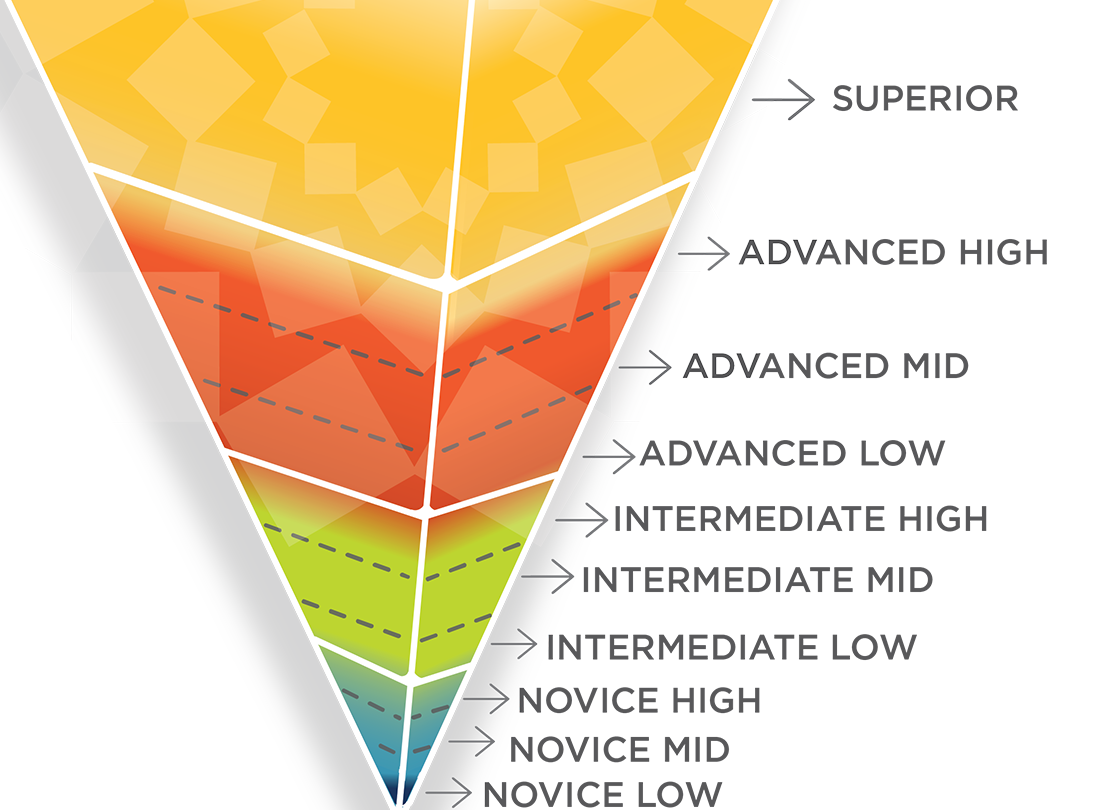The ACTFL Proficiency Guidelines 2024 are a description of what individuals can do with language in terms of speaking, writing, listening, and reading in real-world situations in a spontaneous and non-rehearsed context.
Overview
The ACTFL Proficiency Guidelines (the Guidelines) describe an individual’s language skills in terms of proficiency: the ability to use language to accomplish communication objectives. They portray language proficiency in four domains: listening, speaking, reading, and writing. An individual’s level of proficiency in each domain is defined by four criteria, represented by the acronym FACT:
- Functions and tasks: The types of communication activities that the individual can handle, such as providing personal information, reading a set of instructions, or interacting with professional colleagues at a conference.
- Accuracy: The degree to which the individual can use linguistic features (including grammar and syntax, vocabulary, discourse structure, sociocultural knowledge, and more) to communicate.
- Context and content: The situations or circumstances in which the individual can achieve communication goals, and the topic areas that the individual is able to handle.
- Text type: The length and complexity of oral or written text that the individual can understand and produce, ranging from words and phrases to sentences, paragraphs, and multi-paragraph discourse.

